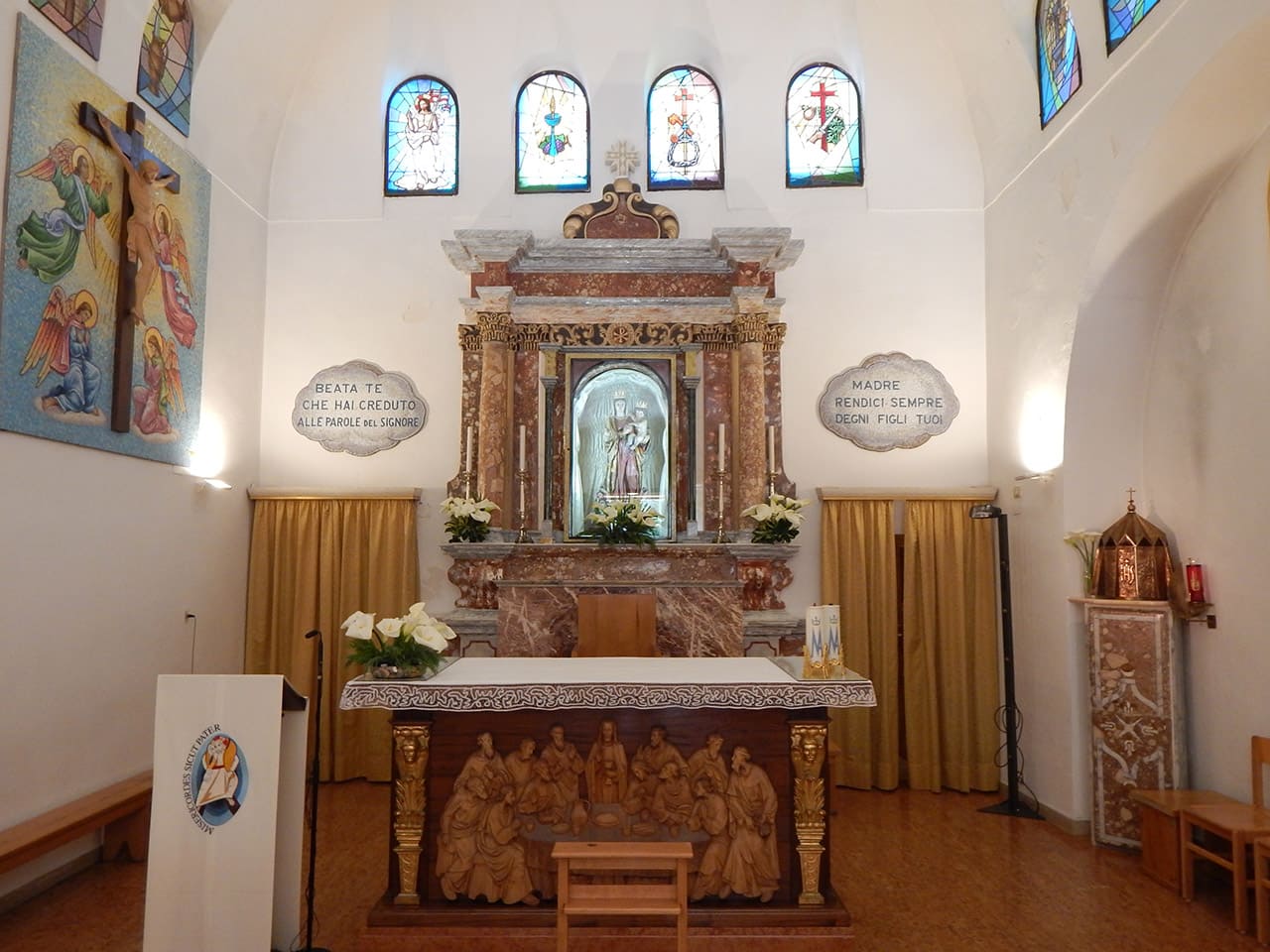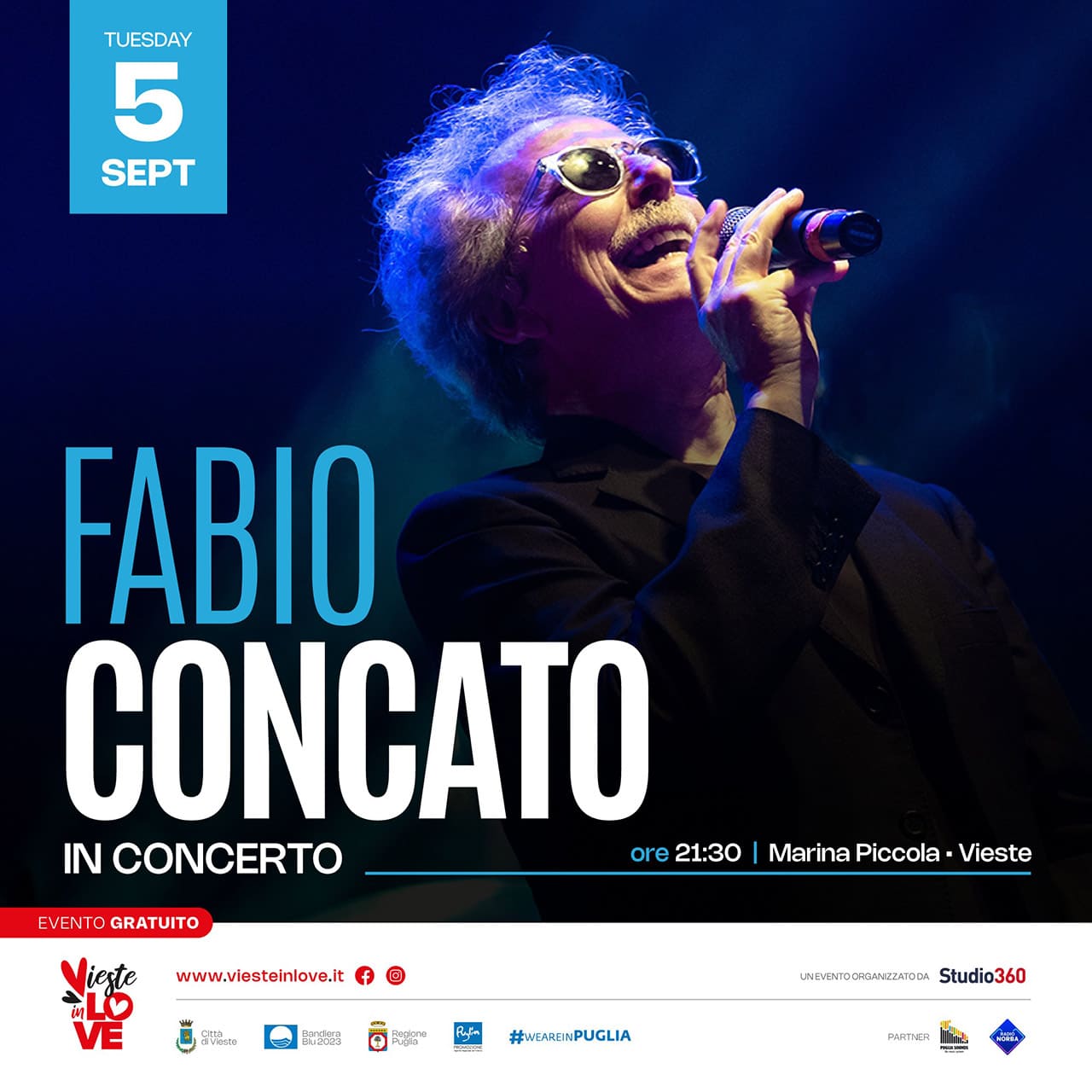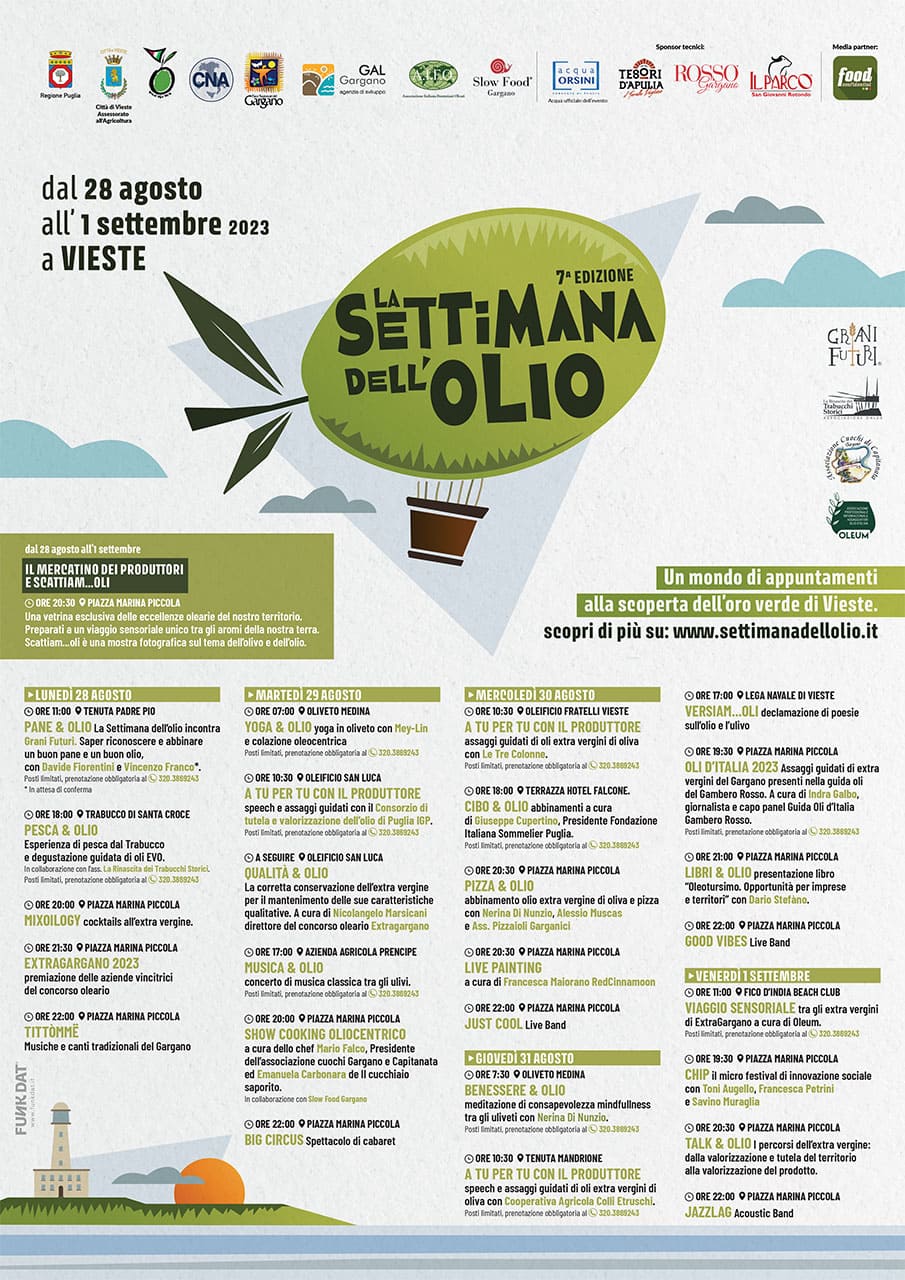Il più antico documento che cita questa chiesa risale 1272 e nella Bolla di Papa Niccolò V del 1288 che elenca le custodie dei conventi francescani. Nel XIV secolo, con la scissione dell’ordine, la chiesa passa dai Conventuali agli Osservanti e, dopo il sacco turco del 1554, gli Osservanti abbandonarono Vieste mentre i Conventuali si trasferirono nella chiesa di Santa Caterina d’Alessandria e fondarono il convento di San Francesco. Da allora la chiesa fu abitata da eremiti che la gestirono in estrema povertà. Dal 1 luglio del 1962 la chiesa svolge la funzione di parrocchia per accogliere i residenti del nuovo quartiere cittadino, e di conseguenza, il complesso ha subito radicali cambiamenti con la costruzione dell’attuale oratorio. L’interno della chiesa presenta una sola cappella sul lato destro dove l’architettura medievale ne rivela la sua antichità. Questa è da considerare la primitiva chiesetta prospiciente il mare che, anticamente, lambiva questo sito. Nella chiesa si conservano due interessanti testimonianze del patrimonio artistico viestano: la Madonna delle Grazie e la pala situata nella piccola cappella. La Statua della Madonna, posta nella sua edicola originale, rappresenta la Madonna del latte, risalente al XIV secolo ma d’impostazione medievale. Caratteristica peculiare di questa immagine è la decorazione del mantello che è arricchita da orchidee albine, specie molto rara presente nel territorio garganico. Il quadro invece risale al XVIII secolo e rappresenta una sacra conversazione con la Madonna. Il dipinto di scuola napoletana, di autore ignoto, presenta un paesaggio idealizzato dove viene raffigurata la chiesa con lo sfondo Vieste e le sue bianche falesie con il monolito di Pizzomunno quest’ultimo rappresentato, forse, per la prima volta in un’opera d’arte. I viestani ricordano questa chiesa con il titolo di Madonna della Libera, usanza che risale al 1835 quando la regina Maria Cristina, moglie del re di Napoli Ferdinando II di Borbone, ebbe una gravidanza difficile e chiese ai sudditi di pregare la Madonna per “liberarla” dai dolori che l’affliggevano. Ogni 23 Aprile in questa chiesa si porta in processione la statua di San Giorgio, patrono della città, seguito da una straripante moltitudine di fedeli.
The oldest document mentioning this church dates back to 1272 and in the Pope Seals Nicholas V of 1288 which lists the custodians of the Franciscan convents. In the 14th century, with the split of the order, the church passed from the Conventuals to the Observants and, after the Turkish sack of 1554, the Observants abandoned Vieste while the Conventuals moved to the church of Santa Catherine of Alexandria and founded the convent of San Frances. Since then the church was inhabited by hermits who ran it in extreme poverty. On 1 July 1962 the church has been used as a parish to accommodate the residents of the new city district, and as a result, the complex has undergone radical changes with the construction of the present oratory. The interior of the church has only one chapel on the right side where medieval architecture reveals its antiquity. This is to be considered the primitive church overlooking the sea that, in the past, brushed this site. In the church there are two interesting artistic heritage of Vieste: the Madonna delle Grazie and the altarpiece located in the small chapel. The statue of the Madonna, placed in its original niche, represents the Madonna of Milk, dating back to the 14th century but with a medieval setting. A peculiar feature of this image is the decoration of the mantle which is enriched with white orchids, a very rare species present in the garganic territory. The canvas dates back to the 18th century and represents a sacred conversation with Our Lady. The painting of the Neapolitan school, by unknown author, presents an idealized landscape where the church is depicted against the background of Vieste and its white cliffs with the monolith of Pizzomunno, the latter perhaps represented for the first time in a work of art. The locals remember this church with the title of Madonna della Libera, a custom that dates back to 1835 when Queen Maria Cristina, wife of the King of Naples Ferdinand II of Bourbon, had a difficult pregnancy and asked her subjects to pray to Our Lady to “relieve” her from the pains that afflicted her. Every April 23rd, the statue of St. George, patron saint of the city, is carried in procession to this church, followed by an overflowing crowd of faithful.
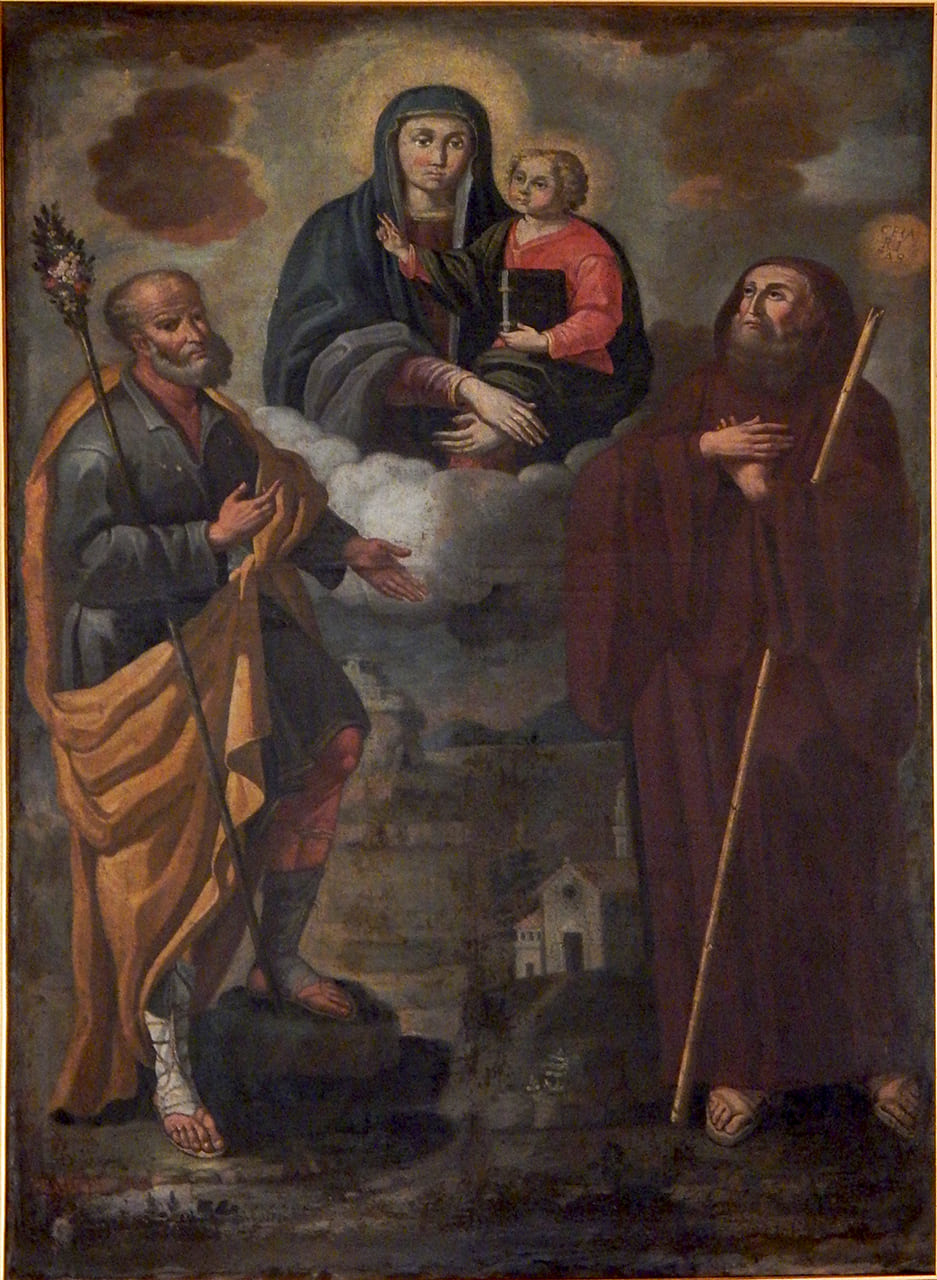
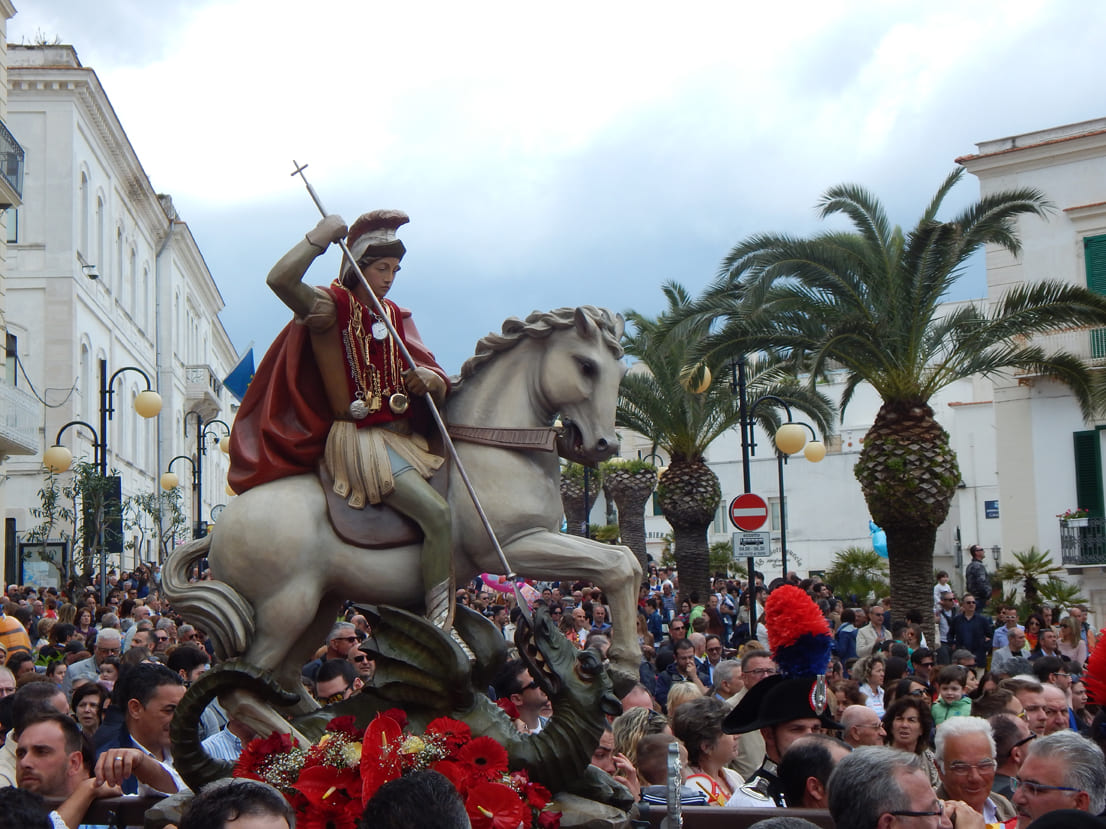
MULTIMEDIALE
San Giorgio, originario della Cappadocia (Turchia), è il santo protettore della città e della Diocesi e si festeggia il 23 Aprile. L’introduzione del culto di San Giorgio a Vieste forse si deve ai genovesi o ai veneziani, nei secc. XIII e XIV, quando cioè la loro attività commerciale con l’Oriente era particolarmente fiorente. In occasione di questa festa fin dal Medioevo a Vieste si organizzava in località Pantanello la fiera del bestiame, soppressa durante il periodo napoleonico, e aveva la durata di sette giorni. Durante questo periodo si organizzavano i festeggiamenti in onore del Santo Patrono, che culminavano con la corsa dei cavalli forse antico retaggio di un rito pagano dedicato dio del mare. Il 23 aprile la statua del Santo viene portata a spalle, in processione, fino alla chiesa di Santa Maria delle Grazie. La tradizione racconta che San Giorgio sia stato invitato dalla sorella, Santa Margherita, ad andare nella chiesetta per mangiare pasta e ricotta. Raggiunta la chiesa qui si festeggia con la sagra della frittata, ormai una vera tradizione per i viestani preparata proprio in omaggio ai due fratelli. Dopo la celebrazione della Santa Messa la processione ritorna in Cattedrale accompagnata di nuovo dai confratelli in divisa, dalle bande cittadine e dalle autorità civili e militari. Uno spettacolo pirotecnico saluta il passaggio della processione sul corso principale della città. Nel pomeriggio la festa con la corse dei cavalli sulla spiaggia di Pizzomunno e con un intrattenimento musicale. La festa si chiude a mezanotte con uno spettacolo artificiale.
St. George, originally from Cappadocia (Turkey), is the patron saint of the city and the diocese and is celebrated on April 23. The introduction of the veneration of the saint in Vieste is perhaps due to the Genoese or the Venetians, in the sec. XIII and XIV, when their trade with the East was particularly flourishing. On the occasion of this festival since the Middle Ages in Vieste the cattle fair, suppressed during the Napoleonic period, was organized in Pantanello and lasted seven days. During this period, celebrations were organized in honor of the patron saint, culminating with the horse race, perhaps an ancient legacy of a pagan rite dedicated to the god of the sea. On 23 April, the statue of the Saint is carried on shoulders, in procession, to the church of Santa Maria delle Grazie. According to tradition, St. George was invited by his sister, St. Margherita, to go to the church to eat pasta and ricotta. Arrived to the church, there is the omelet festival, now a true tradition for the people prepared in homage to the two brothers. After the celebration of Holy Mass, the procession returns to the Cathedral accompanied once again by the confreres in uniform. A fireworks display greets the passage of the procession along the main street of the city. In the afternoon the party go on with an horse racing on the beach of Pizzomunno and follows with musical entertainment. The party closes at midnight with fireworks on the sea.
San Giorgio, ursprünglich aus Cappadocia (Türkei), ist der Heilige Patron von Vieste und wird am 23. April gefeiert. Der Kult stammt wahrscheinlich von den Genuesen und Venezianern, da sie während des 13. und 14. Jahrhunderts wichtige Geschäfte mit dem Orient hatten. Im Mittelalter wurde eine 7-tägige Viehmarkt zur Feier des Heiligen Schutzpatrons organisiert, die mit einem Pferderennen endete. Heute, am 23. April, wird die Statue in Prozession zur Kirche “Santa Maria delle Grazie” gebracht. Der Überlieferung nach wurde San George von seiner Schwester Santa Margherita eingeladen, gemeinsam in die Kirche zu gehen, um Pasta und Ricotta zu essen. Wenn die Statue die Kirche erreicht, beginnt das Fest der Frittata, eine große Tradition der Stadt, zu Ehren der beiden Geschwister. Nach der Messe kehrt der Prozess zur Kathedrale zurück, begleitet von den Bruderschaften, Musikbands, zivilen und militärischen Behörden mit Feuerwerk entlang der Strecke.

